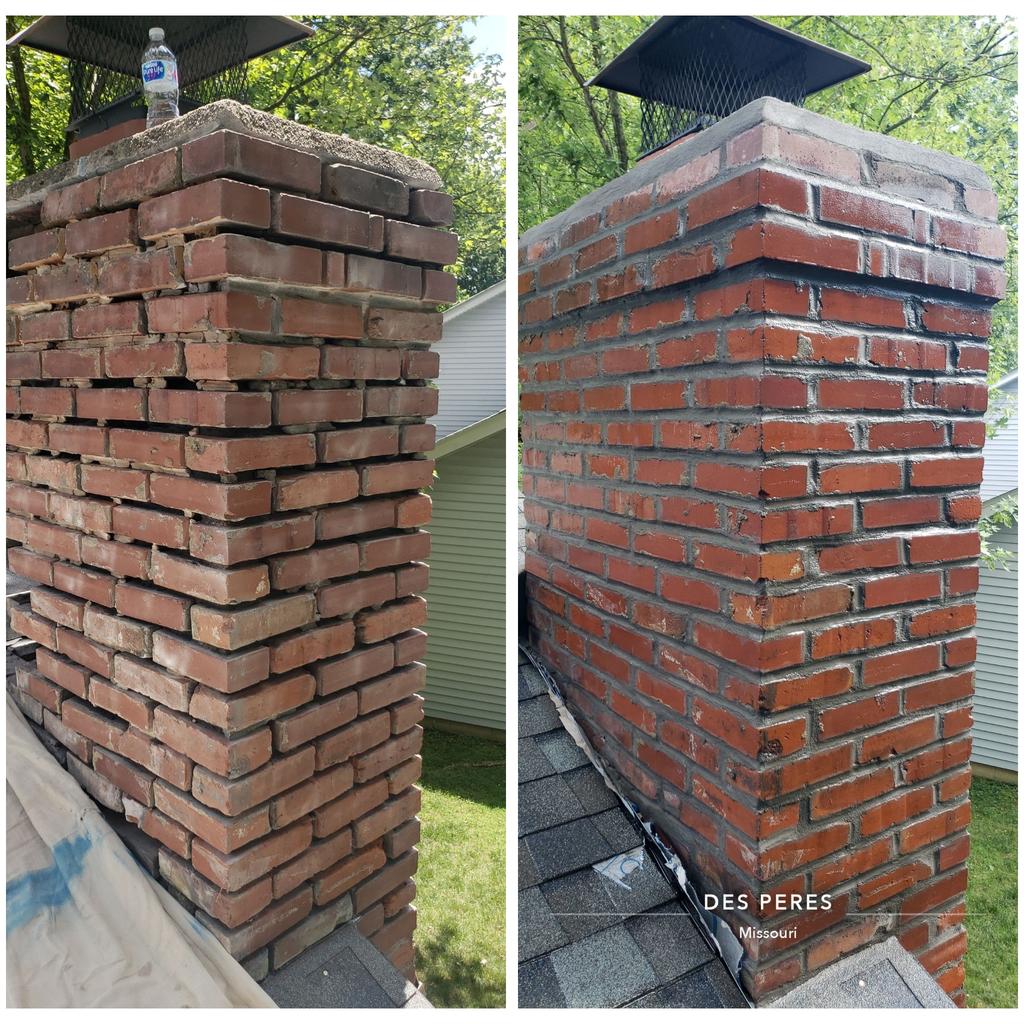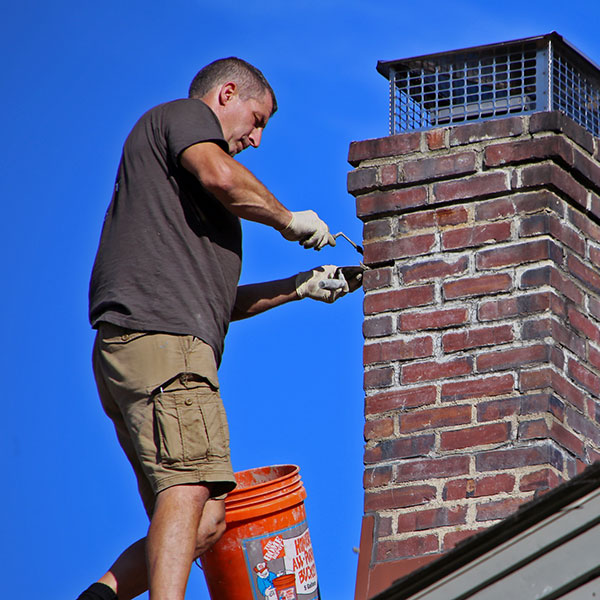Raul's Tuckpointing St. Louis MO: Your Premier Option for Stonework Excellence
Wiki Article
Achieve Impeccable Brickwork Reconstruction With Top-Quality Tuckpointing
When it comes to bring back brickwork, accomplishing impressive outcomes needs a careful method and high-quality products. Tuckpointing, a strategy that entails fixing and bring back mortar joints, plays an important role in ensuring the architectural stability and aesthetic appeal of block buildings.Benefits of Tuckpointing
Over time, the mortar joints in between bricks can degrade due to weathering and age, leaving the blocks at risk to damages. Tuckpointing includes getting rid of the deteriorated mortar and replacing it with fresh mortar, effectively recovering the stamina and security of the brickwork.Another benefit of tuckpointing is its ability to boost the visual charm of brickwork. As mortar ages, it can become blemished or harmed, diminishing the total appearance of the blocks. Raul's Tuckpointing St. Louis MO. Tuckpointing permits the removal of unpleasant mortar and the application of brand-new mortar that matches the color and structure of the original brickwork, resulting in a smooth and visually enticing coating
In addition, tuckpointing assists to stop additional damage to brickwork. By replacing shabby mortar, tuckpointing seals the joints in between bricks, avoiding water and wetness from permeating in. This aids to protect the bricks from damage triggered by freezing and thawing cycles, eventually prolonging the life of the brickwork.
Actions Included in Tuckpointing Process
Any harmed or weakened mortar is carefully removed using knives or mills. It is important to eliminate all loose mortar to create a steady and clean base for the new mortar (Raul's Tuckpointing St. Louis MO).
After the elimination of the harmed mortar, the following step is to prepare the mortar mix. The mortar mix ought to be proportioned very carefully and mixed extensively to make sure consistency.
Once the mortar is prepared, the tuckpointing process starts. A narrow groove is reduced into the joint making use of a tuckpointing trowel. This groove is then full of the ready mortar using an aiming trowel. The mortar is pressed strongly right into the joint to make sure a safe and secure bond.
After the mortar has been applied, excess mortar is thoroughly eliminated utilizing a jointing device or an aiming trowel. The last action includes smoothing and shaping the mortar to match the surrounding brickwork. This is done utilizing a tuckpointing trowel or a jointing device.
Relevance of Knowledgeable Craftsmen in Tuckpointing
Experienced artisans play an essential duty in the tuckpointing process, making sure the restoration of brickwork is carried out with accuracy and experience. Tuckpointing is a labor-intensive job that includes getting rid of damaged mortar joints and replacing them with brand-new mortar. It calls for a high level of skill and experience to accomplish the preferred outcomes.One of the essential factors why knowledgeable artisans are essential in tuckpointing is their ability to examine the problem of the brickwork properly. They can determine the level of the damages and determine the ideal strategy. This is essential due to the fact that every brick structure is one-of-a-kind, and the repair process need to be tailored to its certain demands.
In addition, competent artisans have the experience to pick the appropriate products for tuckpointing. They understand the various types of mortar and their compatibility with different block types. This understanding guarantees that the new mortar will bond properly with the existing blocks, providing resilient stamina and stability to the structure.
In addition, skilled artisans have an eager eye for information and can execute the tuckpointing procedure with accuracy. They can develop clean, straight lines and ensure that the mortar is applied equally and at the proper depth. This focus to detail improves the general aesthetic appeals read more of the brickwork and adds to its structural integrity.
Picking the Right Materials for Tuckpointing
When choosing materials for tuckpointing, it is important to consider their compatibility with the details block type and the preferred result of the restoration process. The products made use of in tuckpointing play a vital function in accomplishing impeccable brickwork remediation. Both primary products involved in tuckpointing are mortar and the colored mortar utilized for the ornamental part.Various block types have differing buildings, and utilizing the wrong mortar can lead to bad adhesion and prospective damage to the blocks. It is necessary to consult with specialists or conduct appropriate study to identify the appropriate mortar for the details brickwork.
Secondly, the tinted mortar utilized for the decorative part ought to be meticulously chosen. The color should match the original mortar as very closely as feasible to maintain the aesthetic allure of the brickwork. Furthermore, the tinted mortar should be resilient and resistant to weathering, making certain that the recovered brickwork stays intact and visually appealing for an extended duration.

Upkeep Tips for Resilient Brickwork Repair
Correct upkeep is crucial for making certain the durability of brickwork restoration. After spending time and initiative into restoring your brickwork, it is important to take positive procedures to protect its appeal and structural honesty. Here are some maintenance tips to aid you accomplish resilient outcomes.Normal cleaning is essential to keeping brickwork. Make use of a soft brush or a pressure washer on a low setting to get rid of dust, gunk, and moss that might accumulate over time. Avoid making use of severe chemicals that can harm the bricks or mortar.
Examine your brickwork consistently for any type of indications of damages. Search for cracks, loosened bricks, or deteriorating mortar. Address these problems promptly to avoid further damage and possible architectural problems. Repointing, or using brand-new mortar in between the blocks, may be essential to preserve the strength and stability of the brickwork.
Shield your brickwork from water damage by guaranteeing correct drainage. Install downspouts and rain gutters to draw away water away from the brickwork, stopping moisture build-up and potential damage. Furthermore, consider using a water-repellent sealer to further protect the blocks from dampness infiltration.
Stay clear of putting hefty things versus the brickwork, as this can trigger stress and anxiety and potentially bring about splitting or variation. Regularly trim nearby trees or plants to stop origins from growing into the brickwork, which can cause damages gradually.
Verdict

Tuckpointing entails getting rid of the shabby click resources mortar and changing it with fresh mortar, properly bring back the strength and security of the brickwork.
Tuckpointing allows visit this page for the elimination of unpleasant mortar and the application of new mortar that matches the shade and structure of the initial brickwork, resulting in a seamless and aesthetically enticing surface.
After the elimination of the damaged mortar, the following step is to prepare the mortar mix. Tuckpointing is a labor-intensive job that involves removing damaged mortar joints and replacing them with brand-new mortar. The 2 main products involved in tuckpointing are mortar and the tinted mortar used for the ornamental component.
Report this wiki page